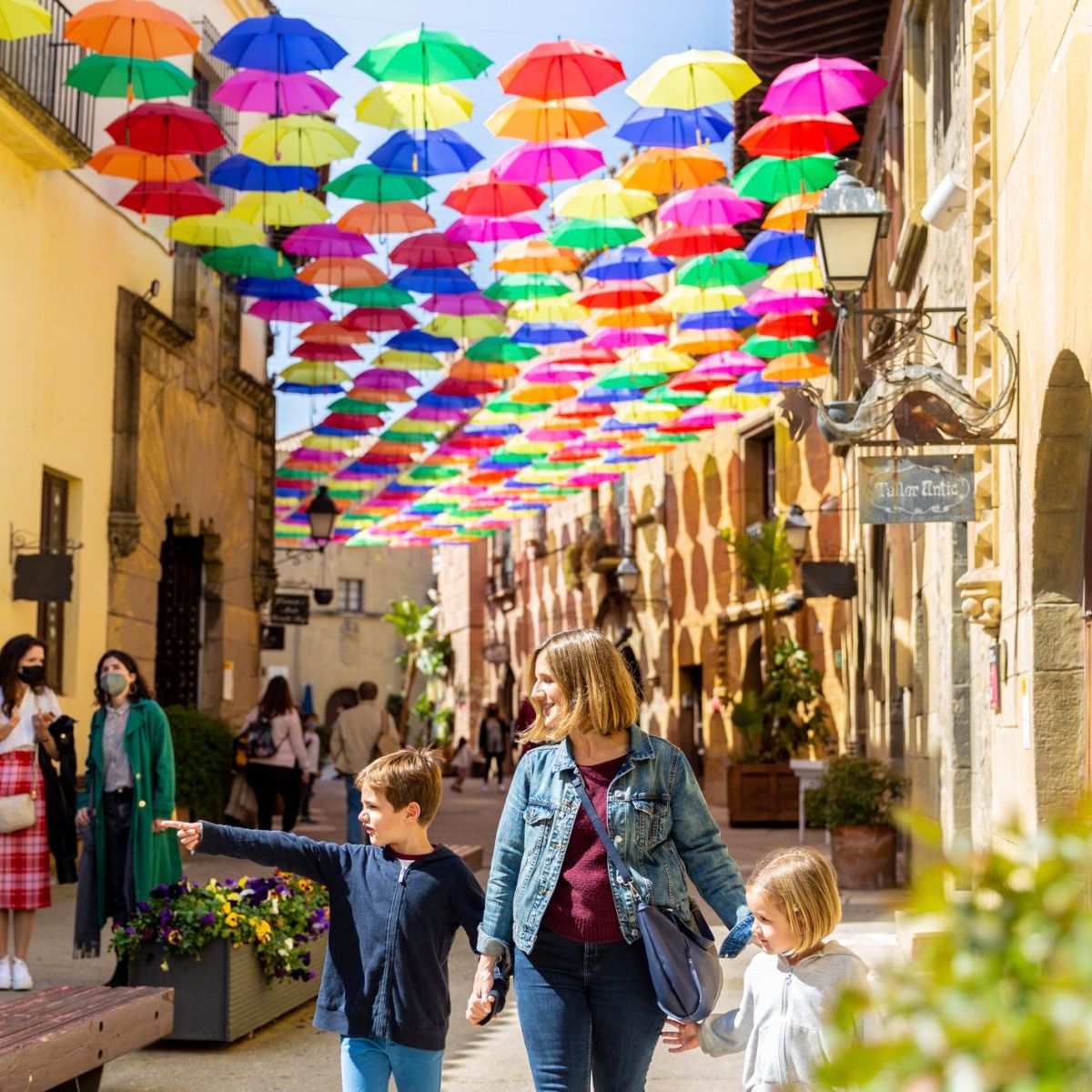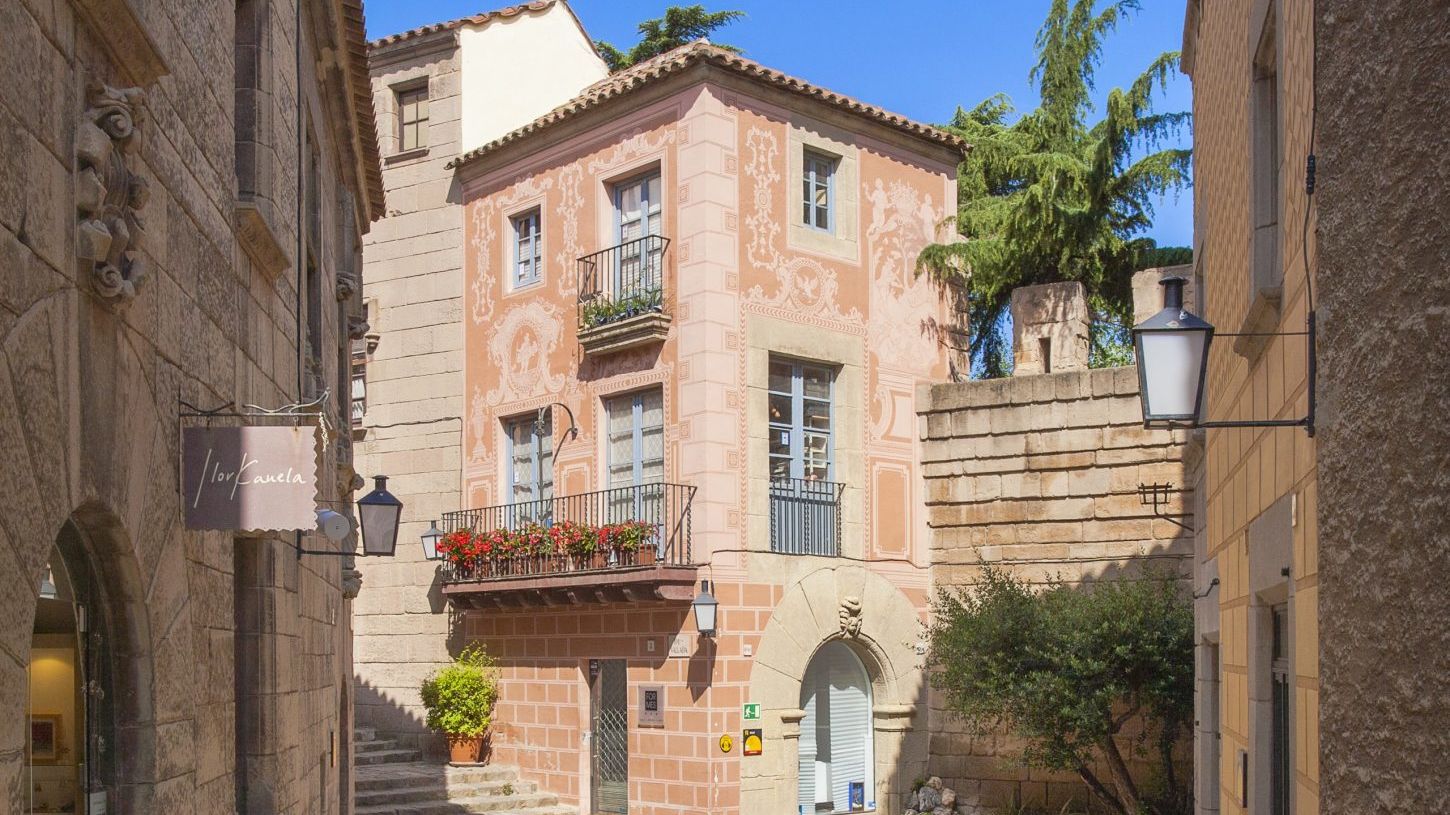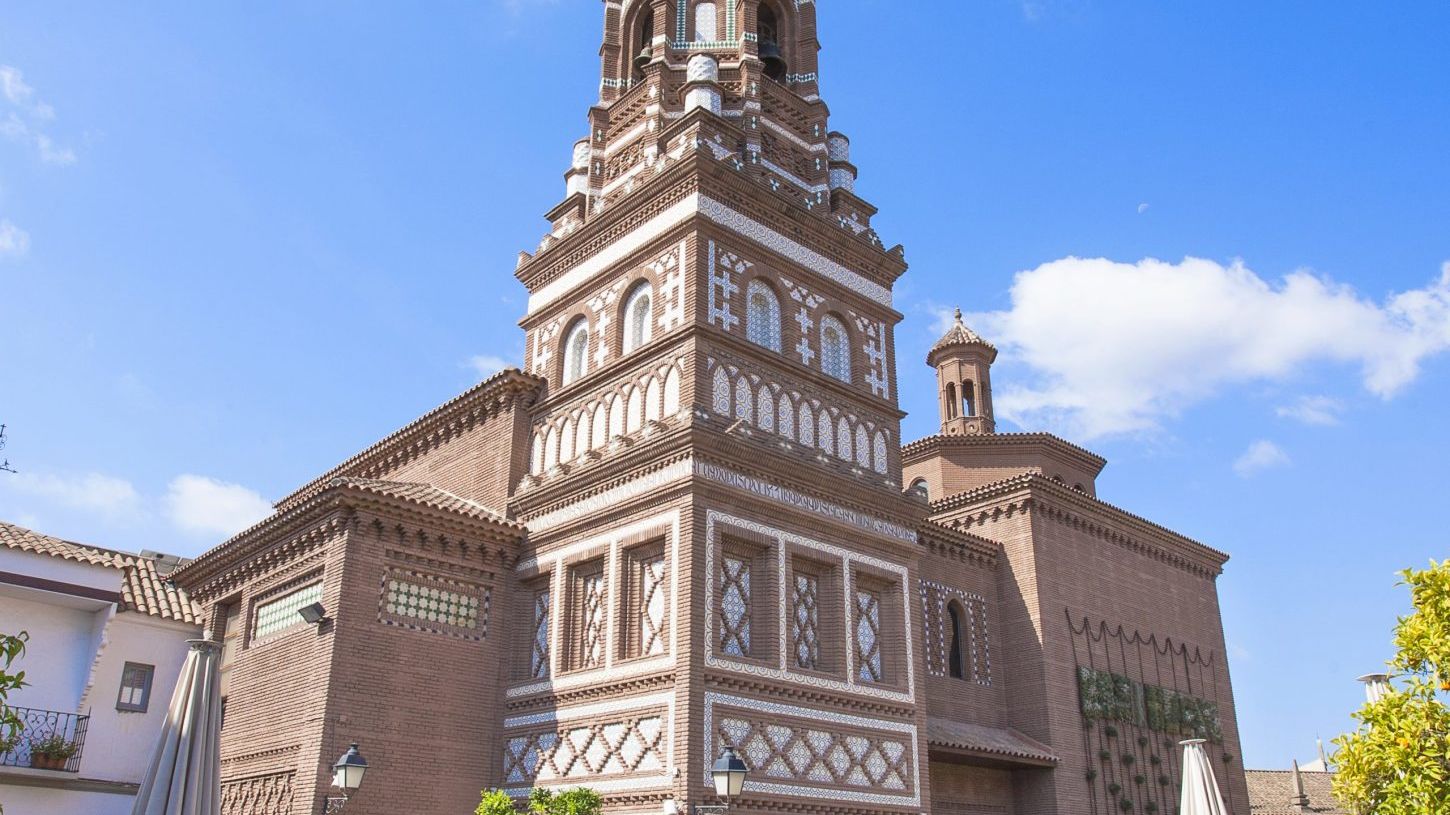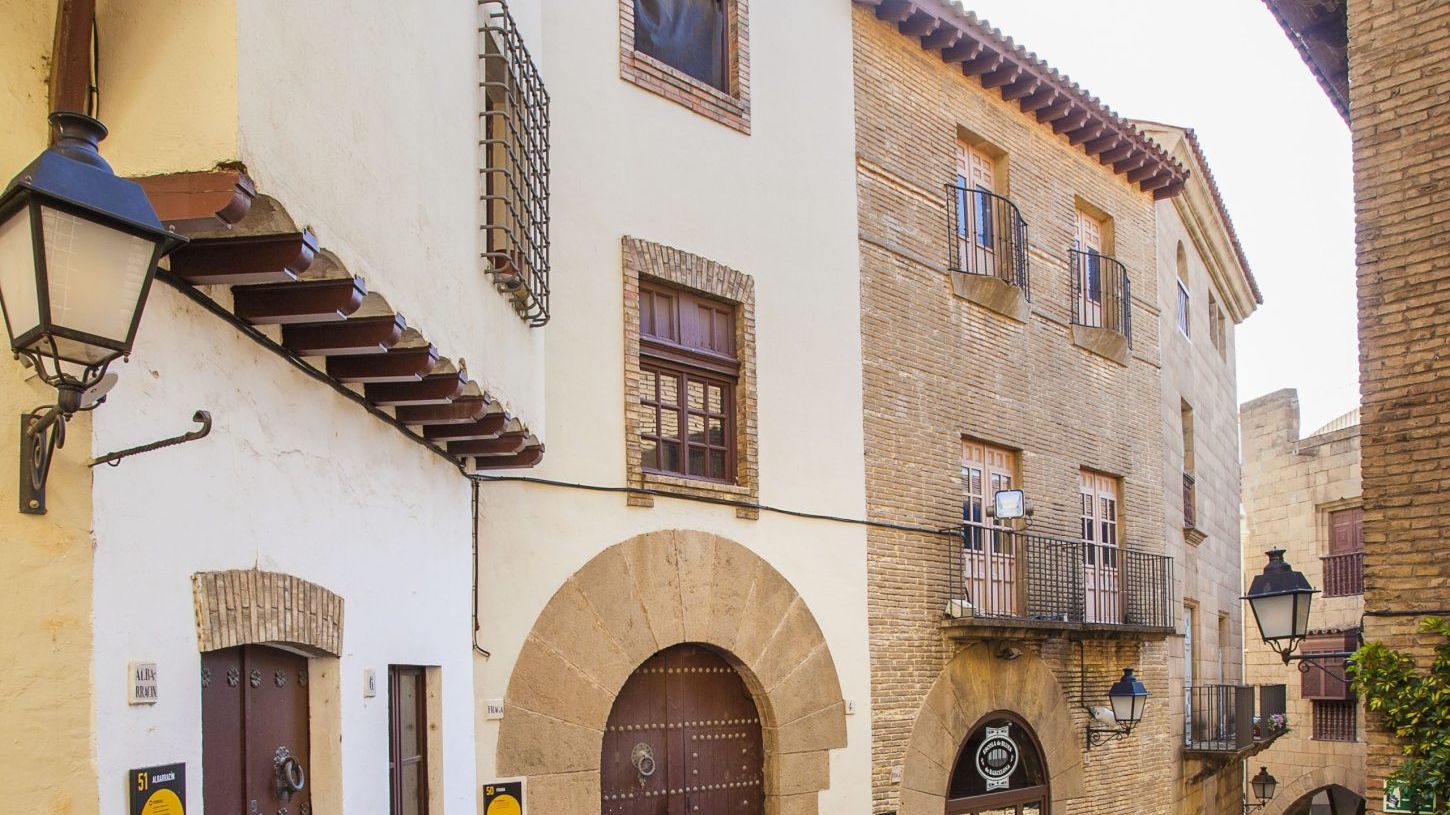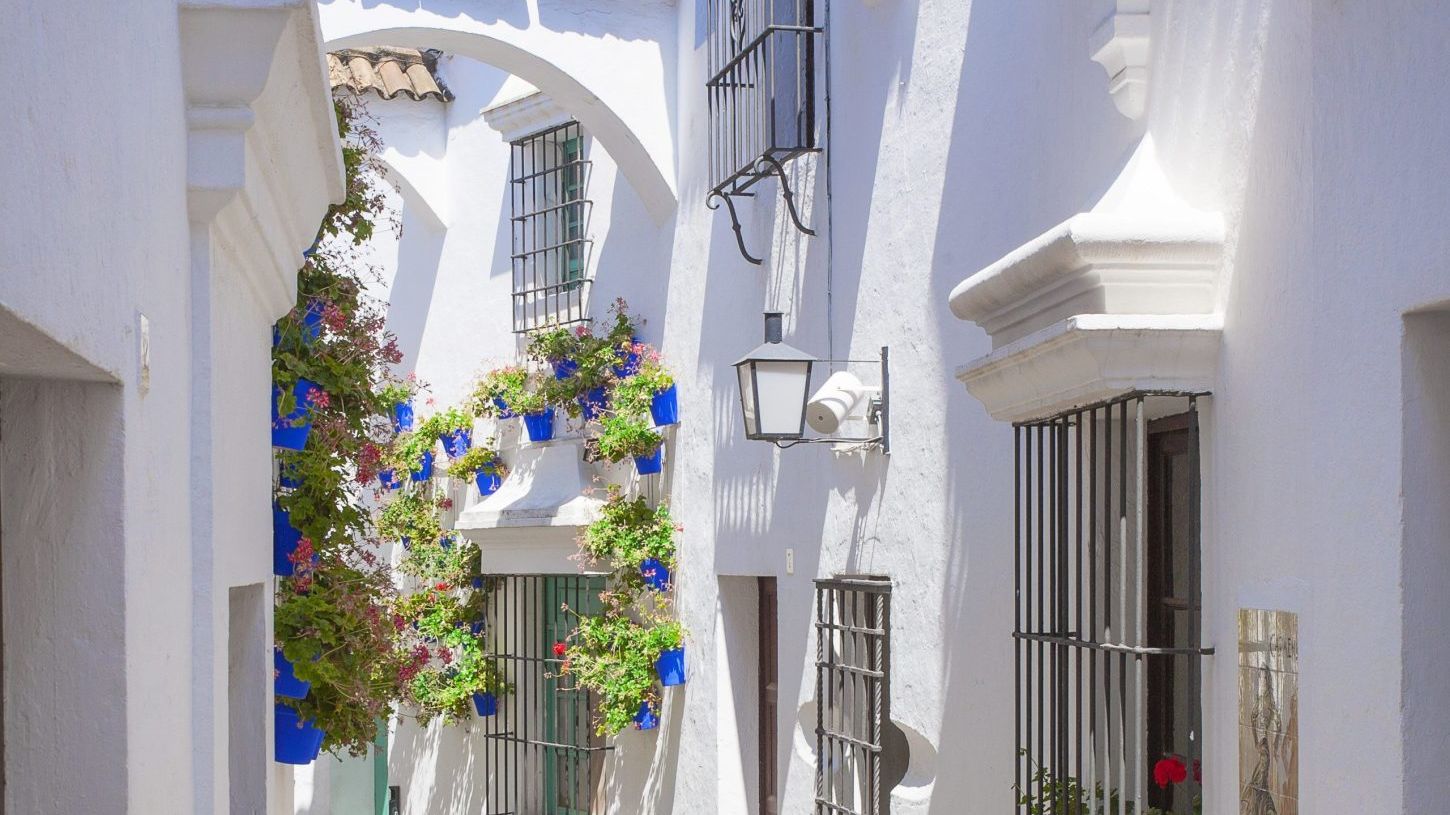A TOWN RIGHT IN THE HEART OF THE CITY
THE ARCHITECTURAL DIVERSITY OF A COUNTRY, IN BARCELONA
Poble Espanyol has 117 real-life scale buildings recreating buildings from virtually every part of Spain. All styles are represented, from Romanesque to Baroque.
DISCOVER THEM, ONE BY ONE
THE BUILDINGS
North
Aragón /
Teruel
Albarracín
Its old quarter has been declared a National Historic-Artistic Site and is considered to be one of the most beautiful villages, not just in Teruel, but in the entire country. Since 1961, it has been considered a National Monument and was awarded the Gold Medal for Merit in Fine Arts in 1996.
The old part of the city is built on a mountain surrounded by the Guadalaviar river. It is a ''despolón'' city, one of the essential urban types of Al-Andalus.
North
Aragón /
Huesca
Alquezar
Declared a Historic-Artistic Heritage Site for its medieval heritage, it comprises a castle-collegiate church, narrow streets and stone houses.
Center
Castilla y León /
Burgos
Aranda de Duero
It is also known for the Plan de Aranda, the oldest urban map of the country and the oldest cartographic document in the General Archive of Simancas, which was used to develop the cities of the New World (Columbus' America).
North
Castilla y León /
Zaragoza
Arcos de la Lonja
The old quarter is extremely well preserved and has been declared a Historic-Artistic Site. Must-visits are the medieval fish market, the Palau dels Sada, the castle... among others.
Mediterranean
Aragón /
Castellón
Arcos de Sos
It has also had significant historical importance as a population settlement throughout the ages. There are remains that indicate that it was already inhabited in prehistoric times and there is abundant evidence of intense Romanisation.
Center
Castilla-La Mancha /
Guadalajara
Ayuntamiento de Sigüenza
The most emblematic places of interest are the castle, the Cathedral and the Main Square. You can also check out the city's streets for their beautiful civil and religious buildings that are brimming with history.
The municipality is currently a candidate for UNESCO World Heritage status.
Mediterranean
Catalunya /
Lleida
Belianes
Mediterranean
Catalunya /
Girona
Besalú
The town's old quarter has been declared a Cultural Asset of National Interest and, in 1979, it was declared a "National Historic Site" because of its great architectural value.
North
Galicia /
La Coruña
Betanzos
The city was the capital of the province of Betanzos, one of the seven that comprised the former Kingdom of Galicia.
Its old quarter, declared a National Historic-Artistic Site, has historic Gothic monuments. It is the capital of Galician Gothic architecture, as the old quarter is considered to be one of Galicia's best preserved.
